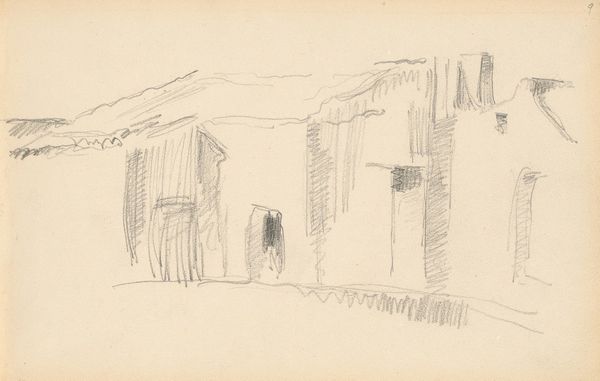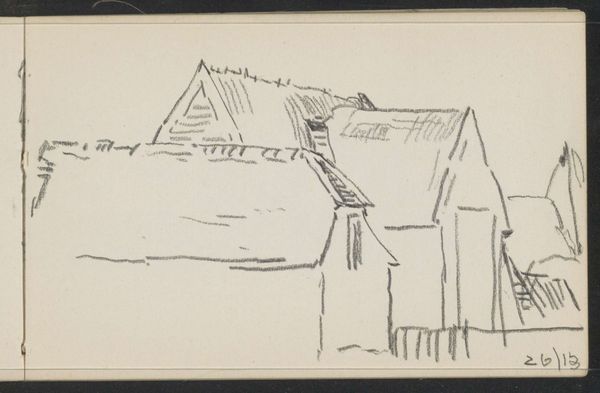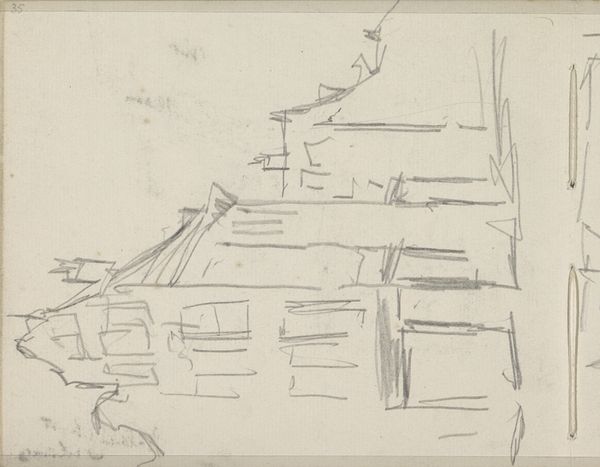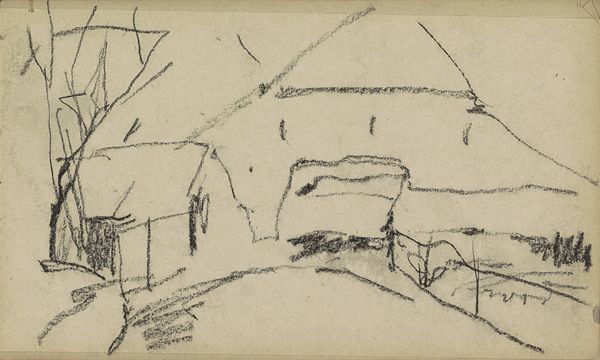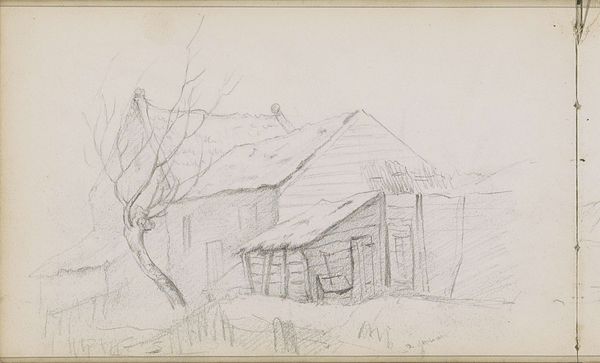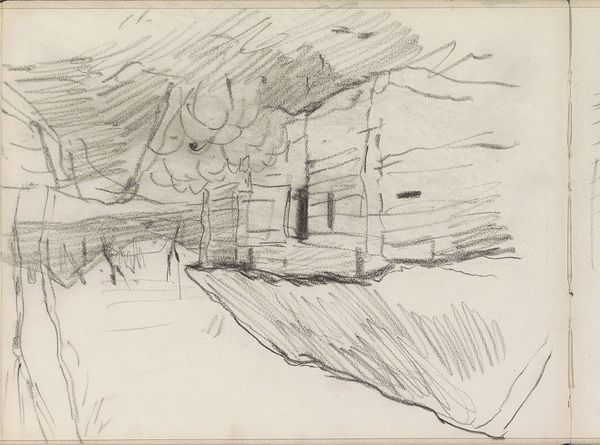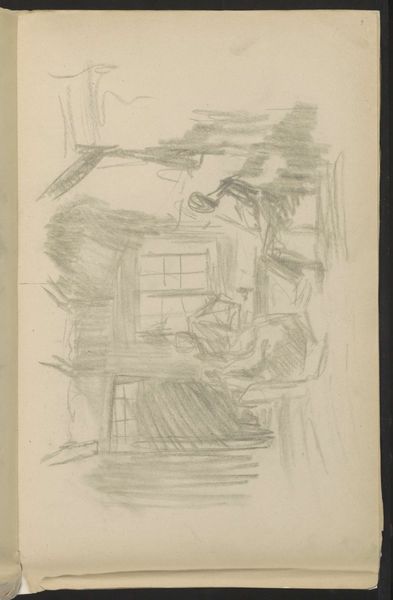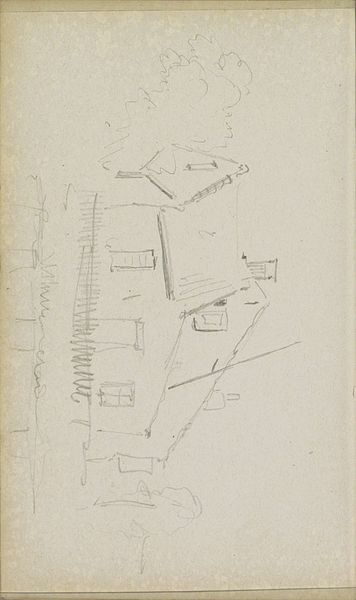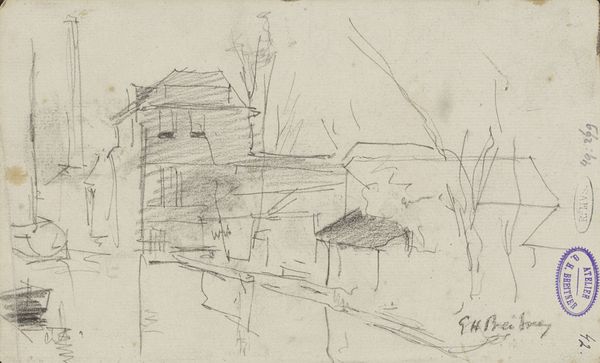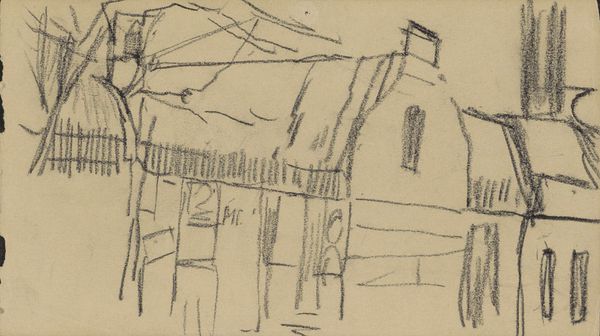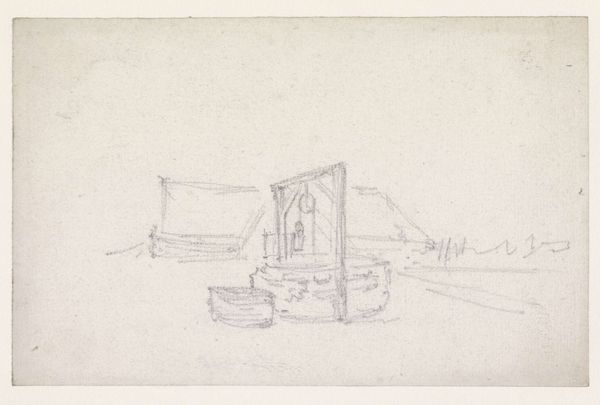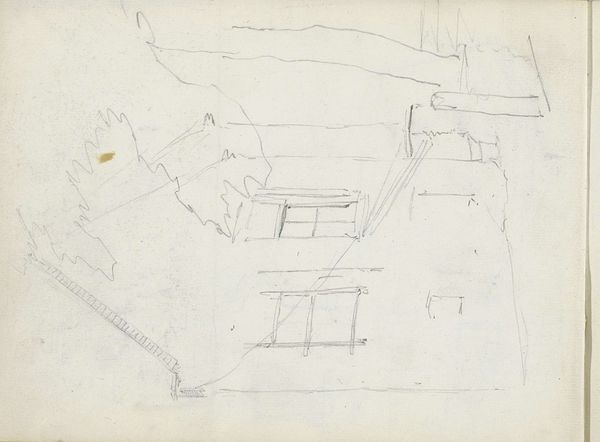
Dimensions: height 116 mm, width 162 mm
Copyright: Rijks Museum: Open Domain
Editor: Here we have Willem Cornelis Rip's "Huis te Beek," created sometime between 1905 and 1909. It’s a pencil drawing on paper, and it feels like a very immediate, almost ephemeral sketch. What strikes me most is how simple the dwelling appears to be, with these decisive lines marking it within the page. What can you tell me about this piece? Curator: This sketch offers us a glimpse into the artist's process but also reflects broader artistic and social trends of the period. The directness, the almost unmediated capture of the scene, speaks to a growing interest in realism and impressionism at the turn of the century. How do you think the rapid capturing translates socio-historically? Editor: Well, perhaps the immediacy allows a rejection of academic standards and represents an increased interest in depicting the lives and locations of common individuals? It brings the high-brow down a notch by sketching this humble home with what appears to be very little pretense. Curator: Exactly! Rip, like many of his contemporaries, was working in a period of rapid social change. Industrialization, urbanization… These had profound effects on the Dutch landscape and the lives of its inhabitants. So, what public role might this kind of unadorned depiction of rural life have served? Editor: Maybe by highlighting the everyday, it invited viewers to consider the value and dignity of these simple structures and, by extension, the lives connected to them, which had previously been neglected in the mainstream imagery? Curator: Precisely. It’s a subtle form of social commentary, wouldn't you agree? Editor: I think I do. It's a good reminder that art doesn't always have to shout to make a statement. This understated sketch speaks volumes about its time. I definitely appreciate its simplicity more having considered the socio-historical contexts at play. Curator: Indeed, and thinking about this piece, I am reminded how profoundly the politics of imagery shift over time. It seems simple, but these ‘simple’ drawings echo social narratives.
Comments
No comments
Be the first to comment and join the conversation on the ultimate creative platform.
